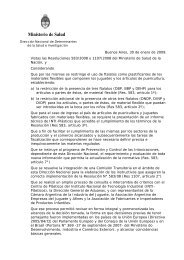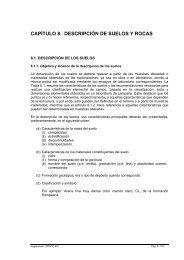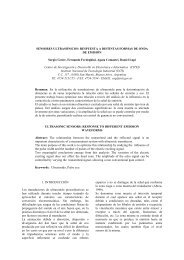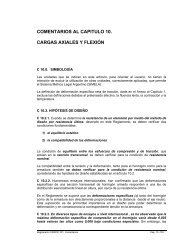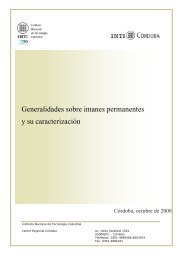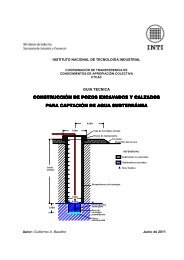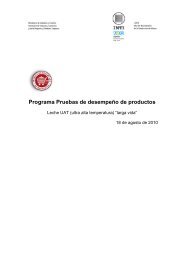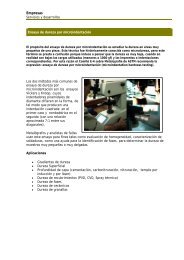SEGREGATION: Causes and Cures - INTI
SEGREGATION: Causes and Cures - INTI
SEGREGATION: Causes and Cures - INTI
Create successful ePaper yourself
Turn your PDF publications into a flip-book with our unique Google optimized e-Paper software.
2<br />
INTRODUCTION<br />
Hot mix asphalt mixtures that are properly designed, produced <strong>and</strong> placed<br />
provide a durable, long lasting pavement that requires very little maintenance.<br />
However, there are a number of potentially damaging problems that can occur<br />
in the design, production <strong>and</strong> placement of hot mix paving mixtures. Of these<br />
problems, perhaps the most serious is segregation. Segregation is a frequently<br />
recurring problem that has caused concern within the paving industry for decades<br />
<strong>and</strong> receives widespread attention by contractors, state highway departments<br />
<strong>and</strong> equipment manufacturers.<br />
When segregation is present in a mixture, there is a concentration of coarse<br />
materials in some areas of the paved mat, while other areas contain a<br />
concentration of fi ner materials. Segregation creates non-uniform mixes that do<br />
not conform to the original job mix formula in gradation or asphalt content. The<br />
resulting pavement exhibits poor structural <strong>and</strong> textural characteristics <strong>and</strong> has<br />
a shorter life expectancy.<br />
Problems associated with segregation are serious. Their elimination is essential<br />
to the production of high quality paving mixtures. Elimination of segregation is<br />
the responsibility of those who produce <strong>and</strong> lay asphalt mix, those state highway<br />
departments who design the mix <strong>and</strong> inspect the fi nal product, <strong>and</strong> those<br />
manufacturers who design <strong>and</strong> market machinery for the paving industry.<br />
This paper was written to help designers, plant operators <strong>and</strong> paving crews be<br />
aware of the causes of segregation <strong>and</strong> known solutions. Each portion of the<br />
plant, paver <strong>and</strong> trucking operation known to cause segregation is discussed<br />
separately. In addition, a diagnostic chart accompanies this paper to help identify<br />
types of segregation <strong>and</strong> probable causes.<br />
MIX DESIGNS<br />
Proper mix design is important in the effort to eliminate segregation. Mixes that<br />
are uniformly designed with no gap-grading are generally very forgiving. They<br />
allow mistakes in other areas of the plant operation or laydown operation without<br />
affecting the mix performance signifi cantly.<br />
Gap-graded mixes are unforgiving. Consequently, any slight error in the plant,<br />
trucking or layout process can result in non-uniform surfaces. If the mix is gapgraded<br />
to a suffi cient degree with a low asphalt content, it simply cannot be<br />
produced without segregation, regardless of the techniques used.<br />
Gap graded mixes have been successfully used in Engl<strong>and</strong> <strong>and</strong> throughout<br />
Europe. However, these mixes often have fi bers or polymers, enabling the use<br />
of a higher asphalt content that makes the fi lm thicker. In many mixes a slight<br />
increase in asphalt content (often as little as 0.2 percent) will reduce segregation<br />
signifi cantly. Increased fi lm thickness dampens particle-to-particle contact <strong>and</strong><br />
reduces the tendency to separate at transfer points throughout the process.<br />
The new SMA <strong>and</strong> Superpave mixes in the U.S. are gap-graded. However, the<br />
addition of fi bers <strong>and</strong> polymers make them less sensitive to segregation.<br />
A maximum density line similar to the one shown in Figure 1 can be utilized as<br />
a guide to uniform grading. To make a chart with a maximum density line for your<br />
operation, use a FHWA 0.45 Power Gradation Chart as shown in Figure 1. Draw<br />
a straight line between the lower left corner of the chart <strong>and</strong> the percent point for<br />
your largest sieve size that retains material.



